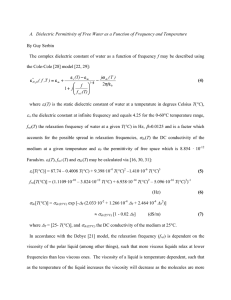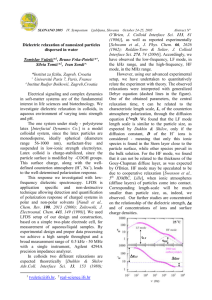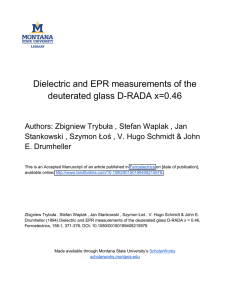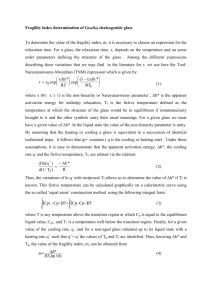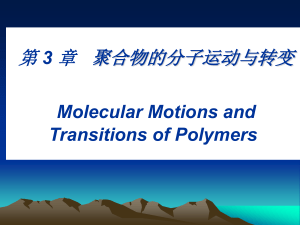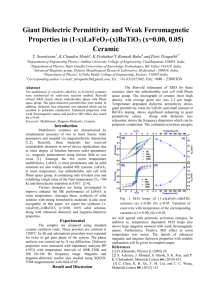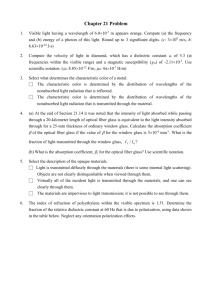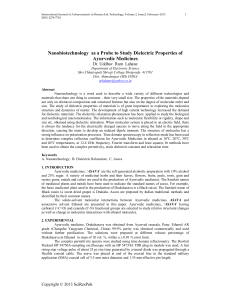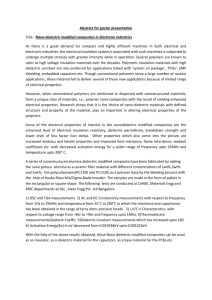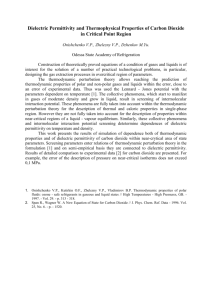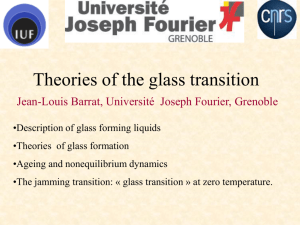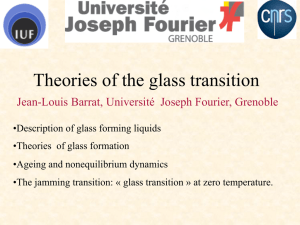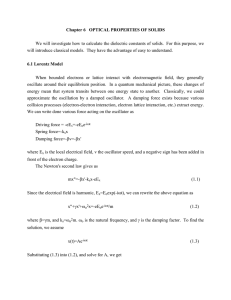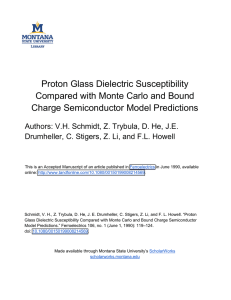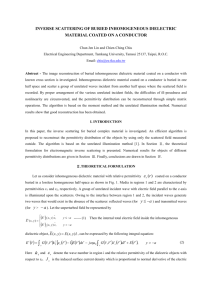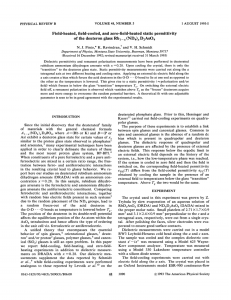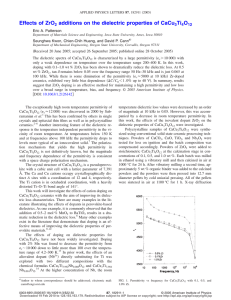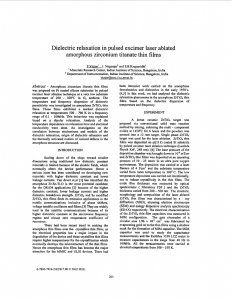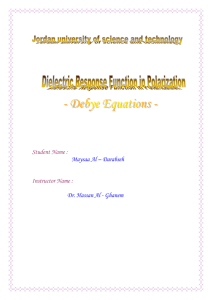Exercise Sheet 11
advertisement
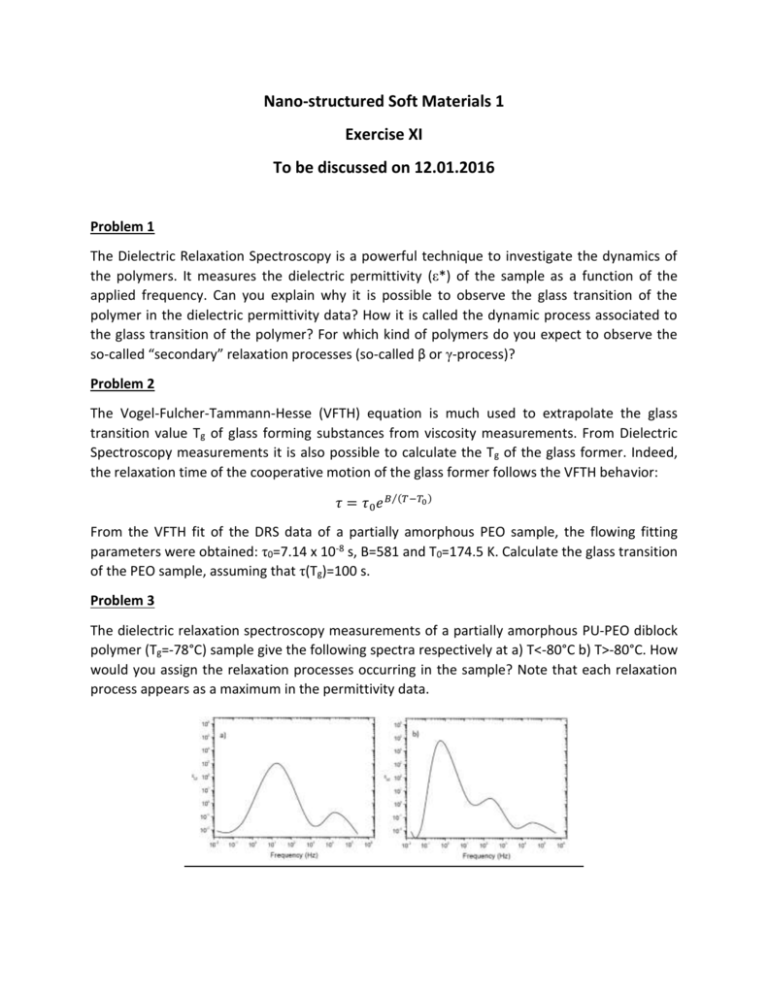
Nano-structured Soft Materials 1 Exercise XI To be discussed on 12.01.2016 Problem 1 The Dielectric Relaxation Spectroscopy is a powerful technique to investigate the dynamics of the polymers. It measures the dielectric permittivity (ε*) of the sample as a function of the applied frequency. Can you explain why it is possible to observe the glass transition of the polymer in the dielectric permittivity data? How it is called the dynamic process associated to the glass transition of the polymer? For which kind of polymers do you expect to observe the so-called “secondary” relaxation processes (so-called β or γ-process)? Problem 2 The Vogel-Fulcher-Tammann-Hesse (VFTH) equation is much used to extrapolate the glass transition value Tg of glass forming substances from viscosity measurements. From Dielectric Spectroscopy measurements it is also possible to calculate the Tg of the glass former. Indeed, the relaxation time of the cooperative motion of the glass former follows the VFTH behavior: 𝜏 = 𝜏0 𝑒 𝐵⁄(𝑇−𝑇0 ) From the VFTH fit of the DRS data of a partially amorphous PEO sample, the flowing fitting parameters were obtained: τ0=7.14 x 10-8 s, B=581 and T0=174.5 K. Calculate the glass transition of the PEO sample, assuming that τ(Tg)=100 s. Problem 3 The dielectric relaxation spectroscopy measurements of a partially amorphous PU-PEO diblock polymer (Tg=-78°C) sample give the following spectra respectively at a) T<-80°C b) T>-80°C. How would you assign the relaxation processes occurring in the sample? Note that each relaxation process appears as a maximum in the permittivity data.
